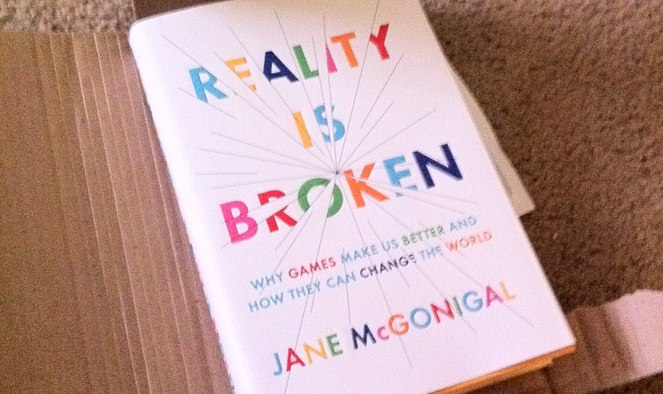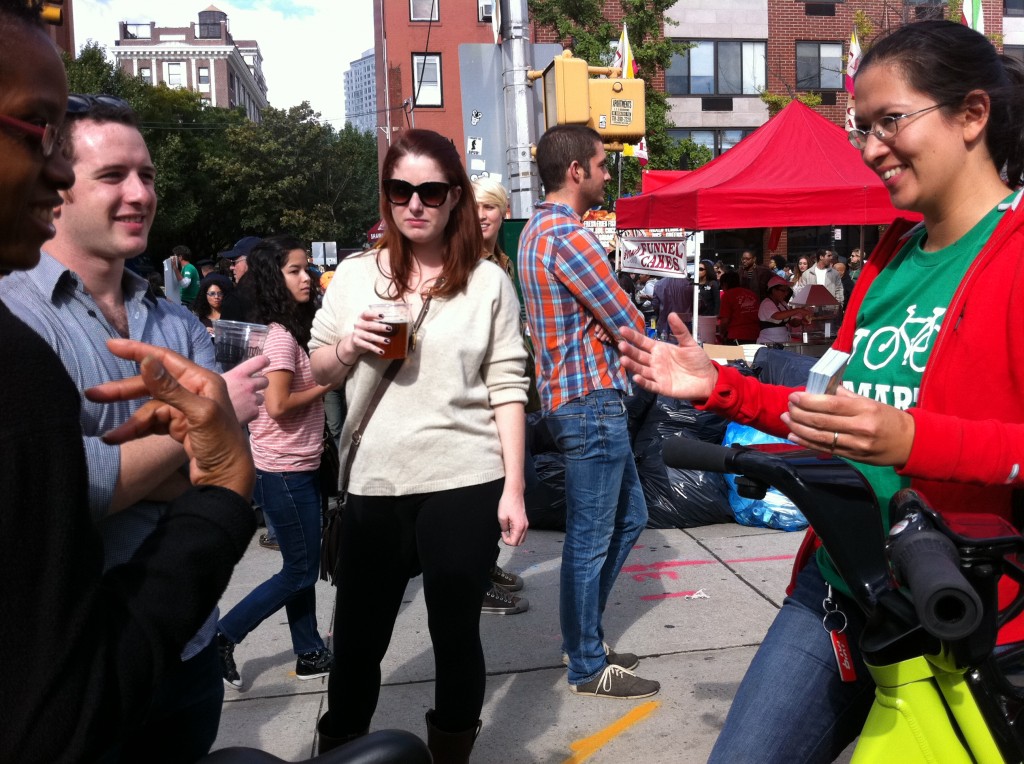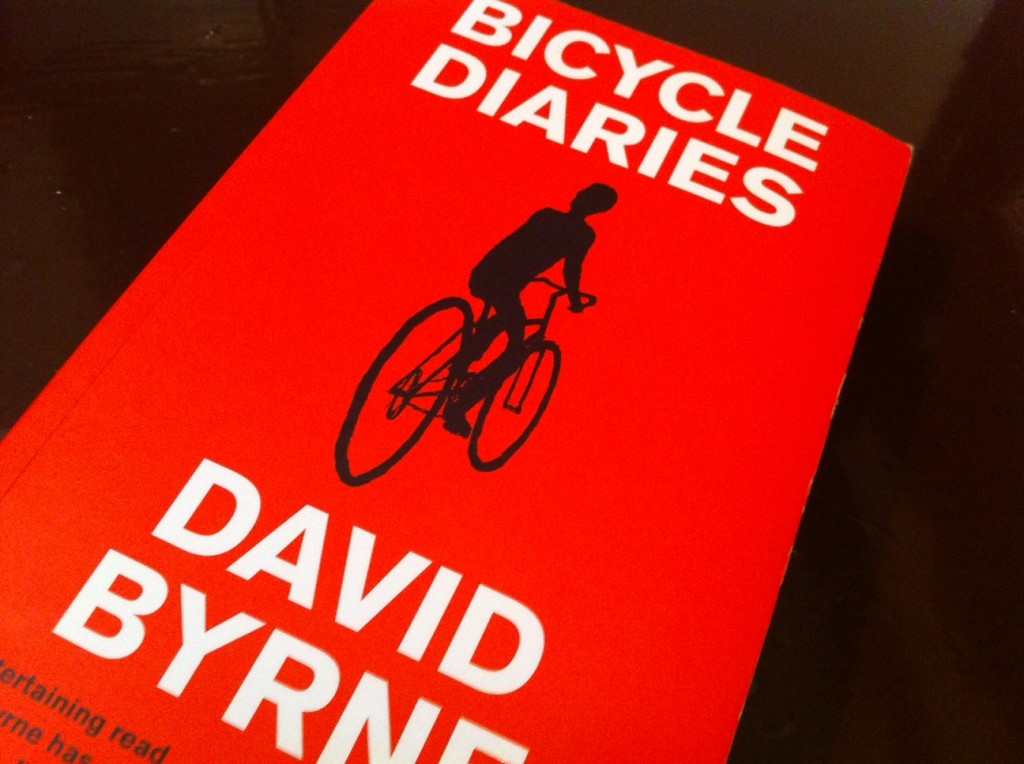Changes are hard to make. Whether it’s changing your diet or turning your transit mode from the subway to biking, we as humans we need other people to hold us accountable and help us adjust to new habits. That’s why behavior change comes best through the support of community. On the last jaunt with strangers that ride bikes, Tour de Taco, this is something that I learned, again. While each biker was on the group ride for various reasons, some were there to get back into biking. I talked with two specific bikers that previously pedaled to work, but had stopped, for their own respectable reasons. They both confessed, in their own words, that they came to get their butts on their bikes again. Basically, they forced themselves to be surrounded by a lot of people doing the very thing they wanted to be doing.
[…]
Games and Competition
An excuse to ride more
According to game researcher, Jane McGonigal, games make people happy, especially collaborative games. She refers to games as ‘happiness engines’. While some video games might make you happy, they might very well be a way to escape from your dreary reality. Right now, real life simply doesn’t engage us the same way that games do:
McGonigal puts it this way:
“The real world just doesn’t offer up as easily the carefully designed pleasures, the thrilling challenges, and the powerful social bonding afforded by virtual environments. Reality doesn’t motivate us as effectively. Reality isn’t engineered to maximize our potential. Reality wasn’t designed from the bottom up to make us happy.”
We have made an effort to bridge the game 'happiness engine' with our reality–further, to bridge gaming with biking. Through the initial testing of a bike game with King of Two Wheels (KOTW), we saw the power of competition to push people to ride their bikes more:
“I did bike more than I normally do, but I didn't think I would win. [...] Because I was biking so much, I've felt more confident in my biking skills.”
—Guri Venstad, KOTW contestant
“I did bike into the studio more. And, I was more mindful of when I could incorporate biking into my day.”
—Tash Wong, KOTW contestant
Throughout our process of designing a bike game, we've referenced Jane McGonigal's tips and tricks:
Four Traits of a Game

One way of motivating people to do things they didn’t really think they would do, is to make a game out of it. Gamification if you like. From Jane Mcgonigal’s book, I’ve found her defining traits of a game:
“The goal is the specific outcome that players will work to achieve.” It gives players purpose.
“Rules place limitations on how players can achieve the goal.” They push players to “explore preciously uncharted possibility spaces” and “unleash creativity and foster strategic thinking”.
“The feedback system tells players how close they are to achieving the goal.” This refers to points, a score, progress bar or levels. Real-time feedback pushes players.
“Voluntary participation requires that everyone who is laying the game knowingly and willingly accepts the goal, the rules, and the feedback.” It establishes common ground between players.
She says that everything else in games works to enhance these four primary traits. Wow.
Bike Community
Throughout the year, we immersed ourselves in to the bike community in New York through meet ups, group rides, blogs, etc. We've learned so many interesting things about people, and have found the community to be very tight knit.
We have been avid followers of blogs like Gudphoto and The Julie Blog, as well as the #bikedtoday Twitter feed and members of Transportation Alternatives.
We've learned about ridership numbers in New York City, and the much anticipated bike share to come during the summer of 2012:
Ridership Statistics
The Department of Transportation has gathered some interesting stats on New Yorkers’ bike habits. The Commuter Cycling Indicator shows a 8% increase between 2010 and 2011, and that commuter cycling more than doubled from 2007 to 2011, in just 4 years. Check out more interesting stats on ridership, and how it has developed at the different typical commuter locations (the bridges, the Hudson River Greenway etc) in this pdf: NYC Commuter Cycling Indicator.
Bike Sharing for NYC
Bike sharing is coming to the Big Apple, and New Yorkers are excited! This is not completely fresh news, but is still very exciting. The other weekend, Kristin and I went to check out the system. Alta, the company that will be installing and managing the bike share, and the New York Department of Transportation were hosting a live demo on Atlantic street. For less than $100, you can become a member and use the shared bikes at no charge all year around. Ride times will be limited to 30-45 minutes to encourage short commutes rather than using the bike to the explore the city all day. The city aims to co-exist with the thriving bike rental businesses that are currently in New York, rather than overriding them. In my opinion, the system seems quite impressive. It’s been rolled out in multiple cities including Boston, DC and Melbourne, and for the most part has been a success.
But, we had two main questions. What about the helmets? And, what are you doing to help guide people that don’t normally bike around the city? Our reason for asking these questions is because we’re exploring a helmet as the physical interface with a digital bike companion. With that, one of our main intentions is to help people better discover the cities in which they live via bike.
Because New York does not mandate bicycle helmets, the bike share system will not require riders to wear them. Though, they may offer some kind of discount to help people purchase their own helmets. As for helping riders find their way around the city, each docking station will have a cycling map posted.
Undoubtedly, potential lies in considering a product that can be used by bike sharers (New Yorkers and tourists) and regular commuters alike. There is yet to come a good solution for helmets and guiding discovery within the current bike share systems.
Bikable Cities
Here are some of our favorite books and articles we’ve run across throughout the thesis year:
Bikeable Cities
I got two books for Christmas. One was about the art of flirting, and it was from my mother. Needless to say, any other book would make me happier. The other book wasn’t just any other, though. It was Bicycle Diaries. Artist and musician David Byrne (from Talking Heads) writes about his love for biking, and how his folding bike has become his favorite way to get around in new cities all over the world.
This point of view–faster than a walk, slower than a train, often slightly higher than a person–became my panoramic window on much of the world over the last thirty years–and it still is.
His descriptions and perspectives on architecture, urban design, politics, culture and art in the cities he visits are all a true joy to read.
Our values and hopes are sometimes awfully embarrassingly easy to read. […] “This is what we think matters, this is how we live and how we play.” Riding a bike through all this is like navigating the collective neural pathways of some vast global mind.
As a European who was new to the US a couple of years ago, and still haven’t been traveling that much around in this country, it disturbs me to read reports about all these American cities that are planned and laid out as if human beings’ only way of getting around should be by car. In most cities across America it is simply way too dangerous to get from point A to B unless you are within the four walls of a moving vehicle. You actually have to get into a car to visit a different part of town, as different neighborhoods are framed in by freeways.
In most of these cities one could say that the machines have won. […] I try to explore some of these towns–Dallas, Detroit, Phoenix, Atlanta–by bike, and it’s frustrating. The various parts of town are often “connected”–if one can call it that–mainly by freeways, massive awe-inspiring concrete ribbons that usually kill the neighborhoods they pass through, and often the ones they are supposed to connect as well.
That you are forced into a car to get around is just as true for American suburbia. I remember being in some cute little NJ town with a friend of mine. We were supposed to go to the grocery store to pick up some food for the Sunday dinner.
Me: How far is it?
Him: Only 5 minutes.
Me: So let’s walk then?
Him: Uhm, I meant 5 minutes by car.
Me: But if it’s 5 minutes by car, it surely can’t be more than like a 20 minute walk?
Him: Well, there’s no way to get there on foot. We have to cross this highway, so… I wouldn’t do that.
This is so frightening, upsetting and sad. Or as Byrne says, “it’s long-term unsustainable and short-term lousy living.” Somebody please do something! I’m unfortunately too busy getting together this Paint Your City thesis celebration of biking right now. In the meantime, I’m so grateful that NYC Department of Transportation acknowledges walkers and bikers as well as cars in their transportation plans. Thanks to DOT and Transportation Alternatives, it gets easier and easier to get around by bike. There are more bike commuters than ever, and only the recent snowfall is making my daily bike rides less likely to happen. But for a delicious Sunday brunch, I can do anything!
Biking and politics
Ben Adler’s article The Rise of Urban Biking in The Nation describes some interesting political views on biking in America. Why is it that bike lanes are more supported by the democrats than the republicans? Is supporting a more bike friendly city mainly about supporting Williamsburg hipsters’ image?
Still, the perception that cycling advocates are elitist has been exploited politically. Conservatives who dismiss smart-growth advocacy as the work of out-of-touch liberals who don’t realize that Americans will never get out of their cars have ramped up their criticisms to the point of demagogy, painting the complete streets movement as a scheme to turn red-blooded Americans into socialists. Last year, Colorado’s Republican gubernatorial nominee, Dan Maes, attacked his Democratic opponent, Denver’s mayor, John Hickenlooper, for building bike lanes, warning that they “could threaten our personal freedoms” and “convert Denver into a United Nations community.” Hickenlooper won.
(Ben Adler, The Rise of Urban Biking)
A year on the bike
A year on the bike – an interesting article about switching from driving to biking for your daily commute by Ben McAllister.



